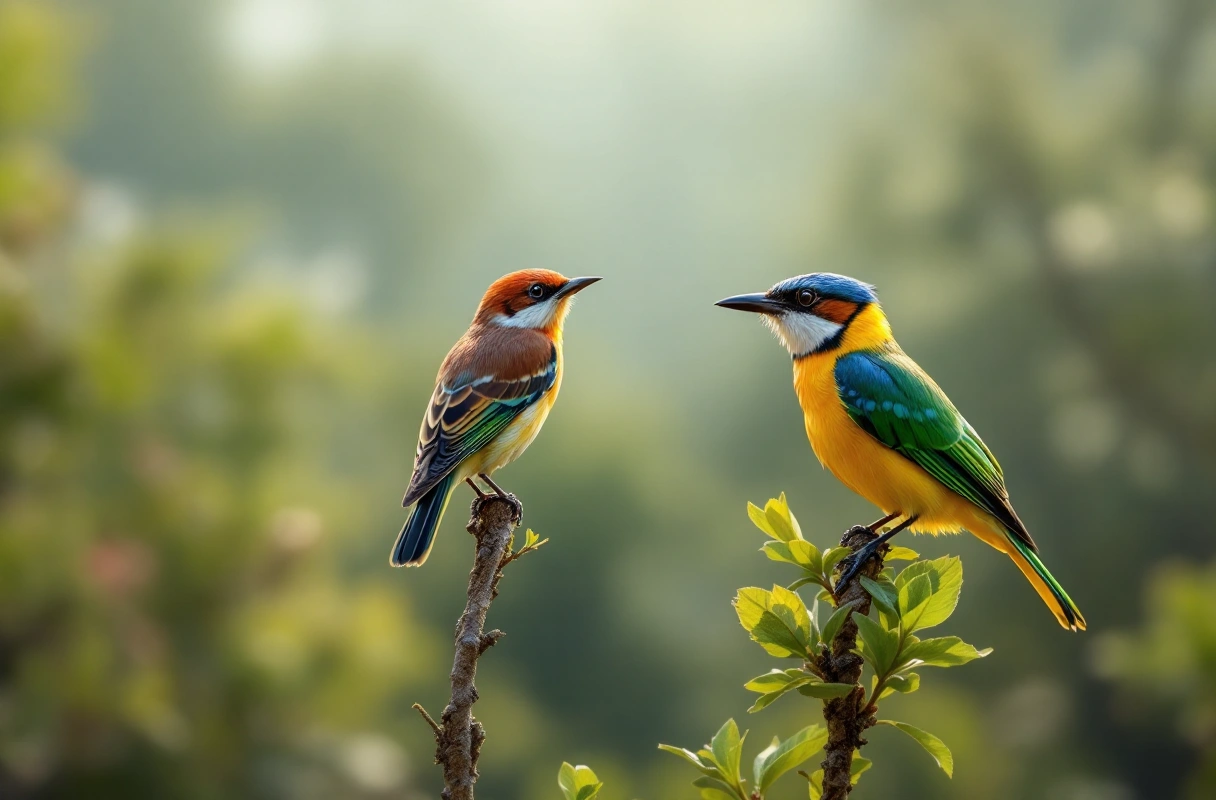
Birdwatching in Tanzania offers an unparalleled opportunity to explore the rich avian diversity of the region, particularly around the iconic Kilimanjaro. The country is home to a staggering variety of bird species, making it a prime destination for both amateur and seasoned birdwatchers. In this article, we will delve into the essentials for a successful birdwatching expedition, focusing on the best practices, equipment, and preparation needed to enhance your birding adventures Kilimanjaro. We will also provide insights into the best birds of Kilimanjaro, tips for bird photography, and the unique aspects of Tanzania's bird migration patterns.

Tanzania is renowned for its diverse ecosystems, which provide habitats for over 1,100 bird species. The combination of savannahs, forests, wetlands, and mountains creates an ideal environment for a wide range of avian life. In particular, Kilimanjaro National Park offers unique opportunities to observe endemic species and migratory birds.
When embarking on birdwatching in Tanzania, it is essential to familiarize yourself with the key species you may encounter. Some of the best birds of Kilimanjaro include:
These species represent just a fraction of the avian diversity in Tanzania, and understanding their habitats and behaviors can significantly enhance your birdwatching experience.

Preparing for a birding adventure requires careful consideration of the gear you will need. Having the right equipment can make all the difference in spotting and photographing birds effectively.
Investing in high-quality binoculars is crucial for any birdwatching expedition. Look for features such as:
A spotting scope can further enhance your experience, especially for distant birds or those in challenging terrain.
A comprehensive birding field guide specific to Tanzania will greatly aid in identification. Look for guides that include:
Capturing the beauty of birds through photography requires the right equipment. Here are some recommendations for aspiring bird photographers:

Preparation is key to maximizing your birdwatching experience in Tanzania. By following certain steps, you can ensure that you are well-equipped and informed for your adventure.
Tanzania's bird migration patterns significantly impact birdwatching opportunities. The best times for birdwatching generally include:
Understanding these seasonal patterns will help you plan your trip effectively.
Kilimanjaro National Park offers several birding hotspots. Consider including the following locations in your itinerary:
By prioritizing these hotspots, you can maximize your chances of encountering diverse bird species.
Utilizing local guides can greatly enhance your birdwatching experience. They offer valuable insights, including:
Consider booking Kilimanjaro wildlife tours that include expert birding guides to elevate your experience.
Even seasoned birdwatchers can make mistakes that hinder their experience. Here are some common pitfalls to avoid:
Respecting local regulations is crucial for the conservation of bird habitats. Always adhere to guidelines set by park authorities, including:
Tanzania's weather can be unpredictable, particularly in mountainous regions. Failing to prepare for changes in weather can lead to missed opportunities. Be sure to:
While the thrill of spotting rare birds is exciting, focusing only on them can lead to missed opportunities with more common species. Embrace the entire birding experience by:
Capturing stunning images of birds requires skill and preparation. Here are some essential tips for bird photography during your Kilimanjaro adventure:
Learning about the habits of specific bird species will improve your chances of capturing them in action. Consider:
Natural light can dramatically enhance your photographs. Aim to shoot during:
Birdwatching and photography require patience. To get the best shots:
Understanding the role of birds in the ecosystem is essential for any birdwatcher. Birds are vital indicators of environmental health and play crucial roles in:
By engaging in responsible birdwatching practices, you contribute to the conservation of these vital species and their habitats.
As you explore the fascinating world of birds in Tanzania, consider how the Banana Slug Club can further enhance your learning and appreciation of nature. This organization offers resources and community engagement opportunities for nature enthusiasts, students, and kids excited about the wonders of science and wildlife.
By participating in local events or accessing educational materials through the Banana Slug Club, you can deepen your understanding of avian species and their habitats. Whether you are a novice birdwatcher or an experienced ornithologist, the insights gained from the Banana Slug Club can enrich your birdwatching experiences.
For more information on birding adventures Kilimanjaro and to connect with fellow nature enthusiasts, visit our website or reach out to us directly. Your journey into the world of birds awaits, and the Banana Slug Club is here to help you every step of the way.
Get free resources, early access to new features and updates.
No spam. Just fun educational emails!